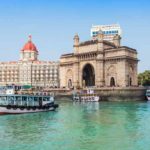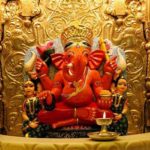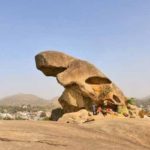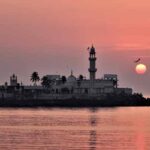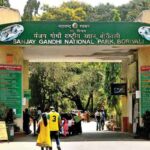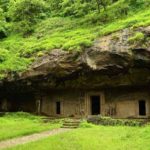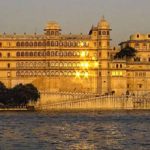10 Best Places to Visit in Mumbai is a metropolis of contrasts. Arguably the most cosmopolitan city in India, it brims with gourmet restaurants, five-star hotels, Bollywood megastars’ fancy living quarters and renowned attractions. But remember: An estimated 20 million people call this buzzing metropolis home, giving a distinctly noisy, energised feel to India’s largest city.
In Mumbai, it’s easy to see India at its most authentic. You can see Hindu devotees picking up garlands from the huge flower market near Dadar railway station, “dabbawalas” bringing hundreds of thousands of freshly cooked lunches to the city’s Churchgate railway station office staff, the swirling colours of the busy “Thieves Market,” and people from all walks of life enjoying the sunset from the su su su railway station. Mumbai is daunting and inspiring in equal measure, and you can never forget your first visit to this city.
When it comes to things to do in Mumbai, visitors are spoilt for options. Plan your adventure with our list of Mumbai’s top tourist attractions in this incredible area.
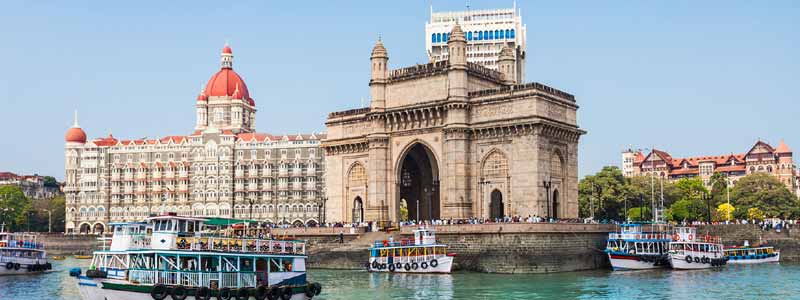
Gateway of India
Gateway of India Visit the most beloved places like the Gateway of India if you want to see Mumbai like you’ve seen in the movies. The monument is the ideal union between the urban atmosphere and colonial architecture and the entrance of the city is guarded by stands.
The structure’s architecture is based on the Indo-Saracenic architectural style applied to Muslim elements, a style introduced by the British and influencing much of South Bombay ‘s architecture. The ideal view shows you an assortment of boats adorning the coast.
A mass of people flock around the monument, clicking on pictures and enjoying every evening the sight of the sea. For a heritage walk of the area, the place is the perfect start. It reflects colonial Bombay by taking in the architecture of the buildings around the monument and recalls the mark of the British left on the area. You’ll feel like you’re in the heart of Mumbai with afternoon tea at the Taj Mahal Palace Hotel or even a sliced chai.
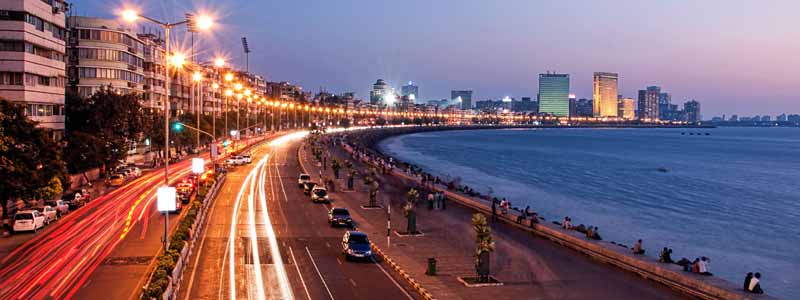
Marine Drive
Marine Drive is an absolute soother to your yearning eyes, approximately 25 kilometres away from Central Mumbai. This location never sleeps and credits its enchanting panorama and ideal atmosphere as an imperative location for film shoots. You will witness the sloshes of the breezy wave stroking through your hair, soaking up your body’s last ounce of tension. Now that the special Nana-Nani Park for senior citizens has also been built, which is a massive tourist attraction near Mumbai. Because of the illusion caused by streetlights that look like a string of pearls resembling a necklace, Marine Drive is also tagged as ‘Queen’s necklace’. Marine Drive is one of the many attractions that Mumbai entails, which can not be excluded.
Touring Tips-You can see many buses and local trains that drive from Central Mumbai. Over and above you can also devour on some mouth-watering snacks and cooling beverages provided by a cluster of street food and stalls surrounding the place.
It’s a long stretch where a soothing time can be enjoyed. It is called the ‘Queen’s Necklace’ as well. A place that doesn’t ever sleep. Among Mumbai’s most popular locations.
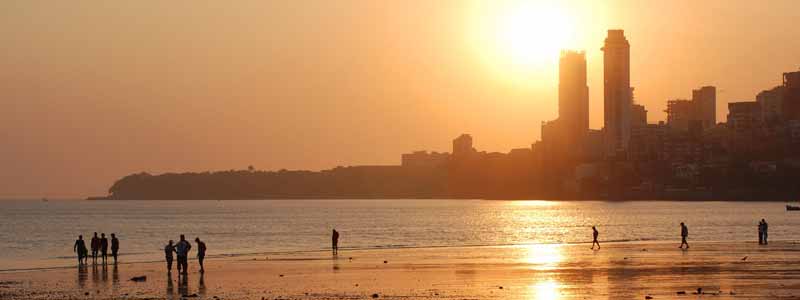
Chowpatty Beach
Chowpatty Beach is one of Mumbai’s most popular beaches. This beach is located in the heart of the city and is most known for its local delicacies that most people enjoy while visiting Chowpatty Beach. Watching this beach ‘s glorious sunsets is a sight worth seeing! This beach is a retreat for many from a boring routine. In order to relax after a long, tiring day, most people visit this beach. People of all ages come here to enjoy the scenic beauty that the beach provides. For anyone visiting this beach, the sea, adorned by its long stretch of white sand in addition to the majestic sky above, is like a celestial dream. Beach vendors selling balloons, toys and local dishes such as spicy raw mango, roasted peanuts and quick-food (or chaats) from Mumbai can be found. To experience the calm and serene environment, tourists who visit Mumbai make it a point to visit this beach. People come here to spend many hours in this relaxing place with their friends and relatives. A walk along Chowpatty Beach in Mumbai will guarantee you a lifetime of experience.
Shree Siddhivinayak Temple
A Hindu temple dedicated to Lord Shri Ganesh is the Shree Siddhivinayak Ganapati Mandir. It is situated in Maharashtra in Prabhadevi, Mumbai. The temple has a small mandap with the Siddhi Vinayak (“Ganesha who gives your wish”) shrine. With depictions of the Ashtavinayak (the eight embodiments of Ganesha in Maharashtra), the wooden doors to the sanctum are carved. Gold is plated on the inner roof of the sanctum, and the central statue is of Ganesha. In the periphery, there is a Hanuman temple as well.
Siddhivinayak is well known among devotees as “Navasacha Ganapati” or “Navasala Pavanara Ganapati” (‘Ganapati bestows a wish’ in Marathi whenever humbly sincerely prayed). In front of the presiding deity of the temple, Ramakrishna Jambhekar Maharaj, a disciple of the Hindu saint Akkalkot Swami Samarth, buried two holy idols on the orders of his guru. As Swami Samarth prophesied, after 21 years since the icons were buried, a mandar tree grew at that spot with a svayambhu Ganesha in its branches.
The original construction of the Siddhivinayak Temple was a tiny 3.6 m x 3.6 m square brick construction with a dome-shaped brick shikhara, built on 19 November 1901. The temple was constructed by Laxman Vithu Patil, a contractor. There were two 3.6 m Deepamalas, a rest house, and living quarters for the caretaker at the 2550 temple complex. The lake bordering it was 30 x 40 sq. m. In scale, on the temple’s eastern and southern sides.In later years, the lake, dug by Nardulla at the beginning of the 19th century to fight the shortage of water, was filled up and the land is now not part of the temple complex. A small Hanuman shrine was built around 1952 in the temple complex for the Hanuman icon, which was discovered near Elphinstone Road during the Sayani Road road extension project.
Juhu Beach
Geographically located in the city’s suburbs, it paves the way for one of the most sought after tourist attractions near Mumbai. In this gastronomic paradise, tourists from all over India and abroad come to Juhu Beach to bask in the sumptuousness of the local dishes. It hosts numerous fun rides and leisure activities that are a hot-spot to be enjoyed by children. If you are struggling to find a reason to unwind; Some of the instant answers to your question include its self-calming shoreline and serene breezes. You simply can’t get enough of it in one go.
If you wish, you can also club it with late spring tours such as volleyball, football, etc. ‘Gandhi Gram’ is located nearby where you can find statues of many freedom fighters and a comfortable corner to hang out with your friends. Touring tips Make the best use of local pani-puris and chaats that leave you happy. Cut some calories by walking along this beautiful shoreline at night.
It is one of Mumbai’s most loved and visited locations. It’s in the city’s suburbs. For kids to enjoy themselves too, it is a hot-spot.
Prince of Wales Museum
During the early 20th century, the Prince of Wales Museum, now commonly known as ‘Chhatrapati Shivaji Maharaj Vastu Sangrahalaya’, was established. Due to its admirable architecture, this museum is known as a heritage structure in Mumbai. One of the most important museums in India is the Prince of Wales Museum. In its galleries, the museum exhibits various pieces of ancient artworks, sculptures and artefacts. A number of new galleries were opened after the renovation project began in 2008, containing works of the Hindu god Krishna, textiles and traditional Indian costumes. Within the museum, frequent exhibits and lectures on many subjects are also held. Initially, the Prince of Wales Museum was a building for the Children’s Health Exhibits that was used as a military hospital. Tourists from all over the world make it a point to visit this majestic heritage building and discover the different ancient objects in this museum.
Chhatrapati Shivaji Terminus
Maharashtra, formerly known as the Victoria Terminus in Mumbai, is a fine example of Victorian Gothic Revival architecture in India, with a combination of themes derived from traditional Indian architecture. The Chhatrapati Shivaji Terminus. The terminus shows a major exchange of factors between the two. The framework, designed by the British architect F.W. A fine example of Victorian Gothic Revival architecture in India, with a blend of themes derived from traditional Indian architecture, is Maharashtra, formerly known as the Victoria Terminus in Mumbai. Terminus of Chhatrapati Shivaji. A significant exchange of influences between the two is shown by the terminus. The structure, built by the British architect F.W.
This famous terminal also reveals the elegance of the British Commonwealth’s late 19th century railway architecture, distinguished by its advanced structural and technological solutions. As the station operates both suburban and long distance trains, it has become an inseparable part of the people of Mumbai. This magnificent terminus functions as the headquarters of India ‘s Central Railways and is one of the nation’s busiest stations. It was renowned until 1996 as the Victoria Terminal, named in honour of Queen Victoria.
Haji Ali’s Dargah
A historic landmark in Mumbai, the Haji Ali Dargah is also one of the most prominent Islamic symbols located in South Mumbai. A wealthy Muslim merchant, who became a saint called Haji Ali Shah Bukhari, constructed the Haji Ali. Prior to embarking on a pilgrimage to Mecca, he renounced all worldly pleasures. In 1431 AD, the Haji Ali Dargah was established in his name. In an area of 4,500 metres, the whitewashed building is located and is flanked by crisp, marble pillars that are still marvelled at today. In several areas, this 400-year-old structure that stands in Mumbai today has degenerated and corroded and the structural upgrading of this wonderful structure started in 2008. The Haji Ali Dargah, regardless of caste, faith and creed, is visited by people from all over the world. Today, Haji Ali Dargah is a popular pilgrimage site and most tourists visit Pir Haji Ali Shah Bukhari ‘s tomb to seek his riches, health, marriage, etc. blessings. Special activities or programmes are arranged at Haji Ali Dargah in Mumbai on special occasions, such as the anniversary of the death of the saint or Eid-ul-Fir.
Elephanta Caves
The Elephanta Caves, a renowned Unesco World Heritage Site, are one of Mumbai’s most impressive temple sites, boasting precious Hindu temple art collections. Currently, the cave-temples of Elephanta date back to 600 AD, named after the elephant statue that once stood near the shore of the island.
We’ll take you to the busy Sassoon Docks, one of Mumbai ‘s oldest ports, to begin your day of discovery. Then we’ll discuss the elegance of the Afghan Church (South Mumbai’s one of our favourite churches). We will eventually get on a boat to witness the magnificent wonders of religion found in the Elephanta Caves.
You’ll wander through a network of subterranean caves on Elephanta Island. These caves contain highly revered statues of Shiva and other gods, as well as shrines, columns, courtyards and halls, all of which are carved out of rock. Listen to the storeys and tales that are behind these pages. We’ll finish the day with a delicious local family lunch.
Mahalaxmi Temple
One of Mumbai’s most famous temples, located on Bhulabhai Desai Road in the Mahalaxmi district, is the Mahalaxmi Temple. Mahalakshmi, the central deity of Devi Mahatmyam, is dedicated to him. The temple was founded by Dhakji Dadaji, a Hindu trader, in 1831. The Temple of Mahalaxmi includes images of Mahakali, Mahalakshmi, and Mahasaraswati, the Tridevi goddesses. Nose rings, gold bangles and pearl necklaces are decorated with all three pictures. In the middle, the image of Mahalakshmi is depicted carrying lotus flowers in tandem. There are several stalls in the compound of this temple that sell flower garlands and other paraphernalia used for worship and as offerings by devotees.
The Mahalaxmi festival is wonderful in Navaratri, where the residence of Mahalaxmi is located in Mumbai, in the presence of Garbhashrimant’s ‘Laxmiputra‘ and ‘Lakshmikanis’ in the city. Goddess Saraswati lives with Pandit Hridaynath, the lovely girl of Goddess Saraswati and Goddess Lakshmi, in ‘Prabhukunj‘ on Peddar Road. ‘Jayshree Gadkar’, one of Marathi’s leading heroines, lives in the ‘Shiv Tirtha’ building adjacent to the temple. From the point of view of the richest individual in the world, Mr. Mukesh Ambani, too, lives here. The ‘Breach Candy’ neighborhood,’ Car Michael Lane,‘ Peddar Road,’ which is situated some distance from Temple, This is the place where big businessmen promote the economy of the country. In all this place, Mahalaxmi is very helpful and it is easy to visit, but the theory of Mahalaxmi can be done very easily.
In the present place, this mother, Mahalaxmi, resides with her two sisters, Mahakali and Mahasaraswati, usually from 1784-85.
The two Mumbai and Worli bunds were constructed by British Governor John Hornby of Mumbai to build and repair the coast. Holybie was not completely appropriate to the East India Company trader. It does not, however, lose its bravery. The southern tip of the islands of Mumbai, that is, the temple of Mahalaxmi now, and the village of Worli in front of it, ie the water of the sea is spreading till the present time is the ‘Love-Grove Udcanchan Center’ or ‘Atria Mall’ of the Mumbai Municipal Corporation. The water from the sea entered the crossing of the Byculla at the time of recruitment. So, if you want to go from Mumbai to Worli, then there’s no choice without a ship.
‘The Great Breach’ was named by the British for the water entering the sea. Breach is a window which implies a loop. Hornby agreed to close this traffic and without going to England ‘s office for permission to construct a car that could enter the island of Worli, he would fill this creek and start operating as a carriageway. The task of building ‘Worli Bandh’ was said to have been completed. Ramji Shivaji ‘s young engineer, Lord Prabhu Prabhu, was entrusted with the contract for the construction of this dam. Building work has begun. The stars came here, filling the stone statue with the number. The task of collecting the amount of stone in the bay began. The dam built by the sea water would fail and start again if there was any improvement in the construction. For several months, it lasted. Given the technology of time, it was a hard job. Ramji Shivaji and Hornby, however, both did not lose heart. They’ve tried it over and over, so they want to be there again!

